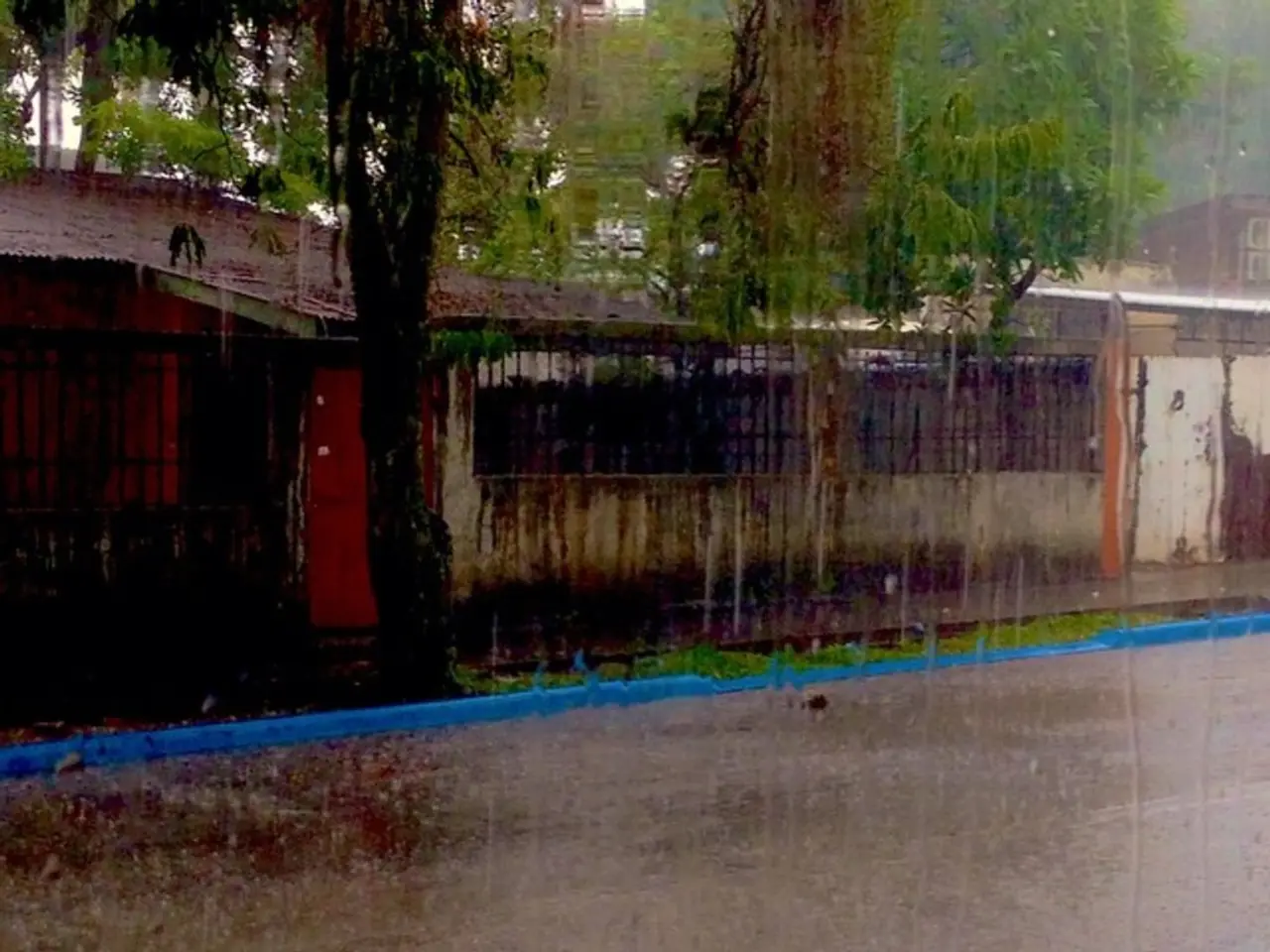Texas Facing Possible Catastrophic Floods: Impact of Warning Alerts Examined
The recent catastrophic floods in Texas' Hill Country have highlighted the need for improved flood risk communication, particularly for extreme rainfall events. One proposed solution is a flood risk communication system akin to the Saffir-Simpson Scale for hurricanes or the Enhanced Fujita Scale for tornadoes, specifically designed for heavy rainfall events.
Such a system, known as the Flash Flood Severity Index (FFSI), has several potential advantages. Like the Saffir-Simpson Scale, the FFSI could standardise risk communication, distilling complex meteorological data into an easy-to-understand system that communicates flood risk to the public effectively. This clarity could lead to improved public preparedness and response, allowing residents and emergency responders to make timely decisions regarding evacuation, resource allocation, and infrastructure protection.
Moreover, a rainfall-focused scale could integrate factors such as expected rainfall intensity, flood depth, and potential debris flows in vulnerable terrain like the Texas Hill Country, improving disaster readiness. Additionally, quantified flood risk categories could inform updated building codes, land use planning, insurance policies, and emergency management strategies.
However, the FFSI also has drawbacks. The complexity of rainfall-flood relationships makes categorisation less straightforward, potentially reducing accuracy and trust. There is also a risk of oversimplification, as a single-scale system might not capture the multifaceted hazards of floods or secondary impacts like water contamination and landslides.
If the scale does not communicate nuanced risks properly, people might underestimate the danger of lower categories or assume safety from higher categories if the scale does not include all relevant hazards explicitly. Furthermore, developing such a system would require extensive research, real-time data integration, and continuous refinement as climate change alters rainfall patterns and flood behaviour.
The FFSI was initially studied by a collective of scholars in 2016, and since then, extensive field testing has been conducted. Two months ago, a team including Dr. Amanda Schroeder outlined the results of this field testing in the Bulletin of the American Meteorological Society. The Texas Hill Country flooding on July 4th was a Category 5 event according to the FFSI.
Adequate, timely weather warnings were issued in the days and hours leading up to the flood catastrophe. However, misperceptions about flood risks, especially in rain-prone regions, can be complicated by normalcy bias narratives. People have a keen sense of what damage from an EF-5 tornado looks like due to the Enhanced Fujita Scale, and the FFSI could serve a similar purpose for flood events.
As the death toll from the flood disaster approaches 130, and nearly 170 people are still missing, the need for improved flood literacy and understanding of flood risk levels becomes increasingly apparent. Research is needed to find the right cadence and usage for the most extreme categories of the FFSI. The FFSI has five impact-based categories, ranging from very minor flooding (Category 1) to catastrophic flooding (Category 5).
Historically, weather disasters of this magnitude lead to discussions, policy changes, and reflection. As we move forward, it is crucial to continue these conversations and work towards a more effective flood risk communication system that can save lives and reduce property damage during extreme rainfall events.
In light of the Texas Hill Country floods, the need for a comprehensive flood risk communication system, similar to the Saffir-Simpson Scale for hurricanes or the Enhanced Fujita Scale for tornadoes, is crucial for addressing extreme rainfall events. Such a system, known as the Flash Flood Severity Index (FFSI), could potentially standardize risk communication, provide clarity for public preparedness, and inform decision-making in terms of evacuation, resource allocation, and infrastructure protection. On the other hand, the complexity of rainfall-flood relationships demands extensive research, real-time data integration, and continuous refinement to ensure the FFSI accurately communicates nuanced risks, also taking into account secondary impacts such as medical-conditions and weather-related science factors.








